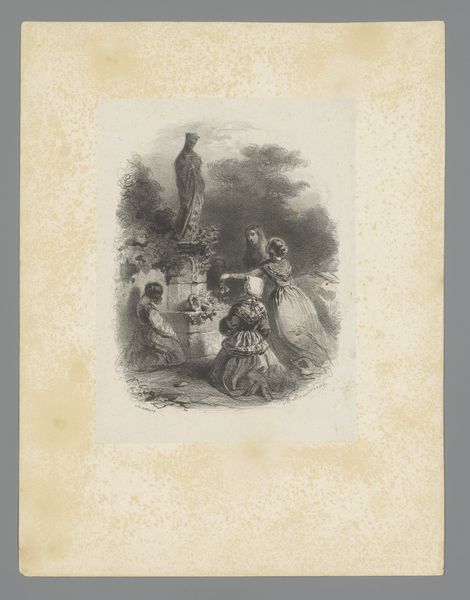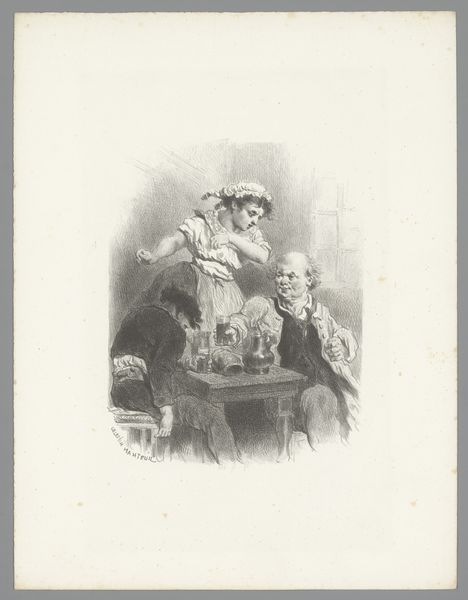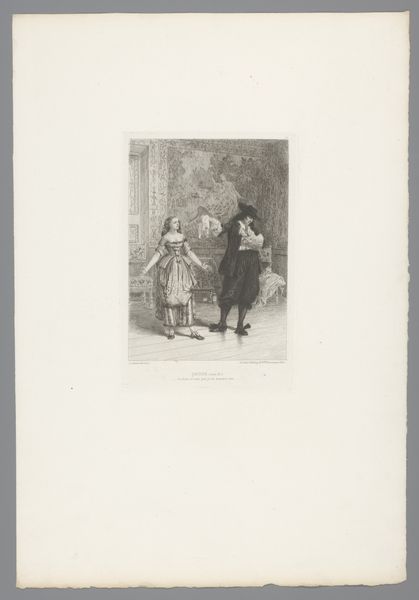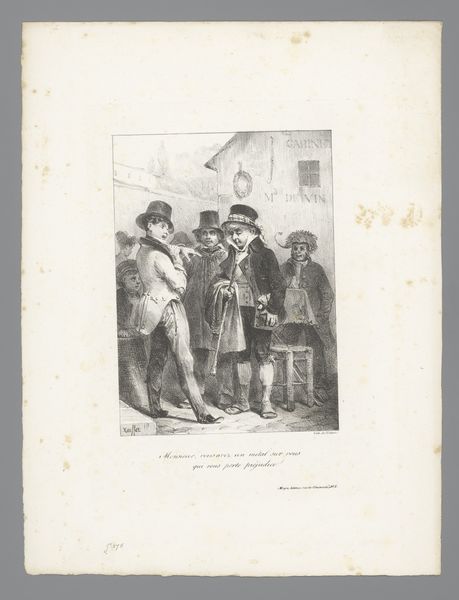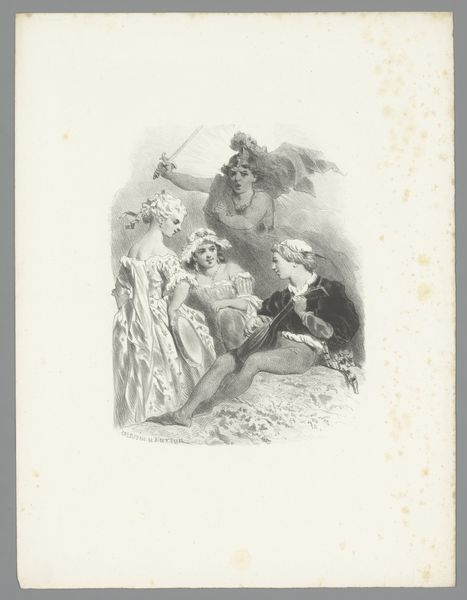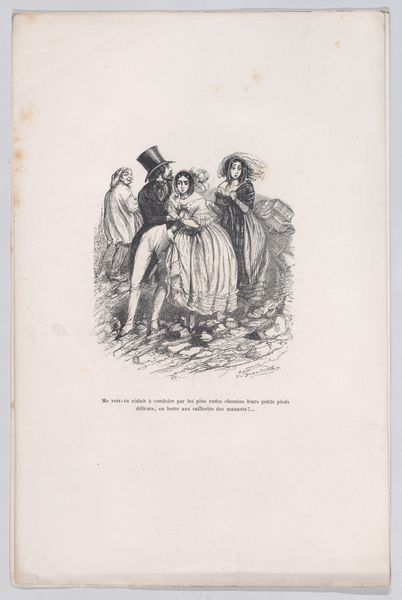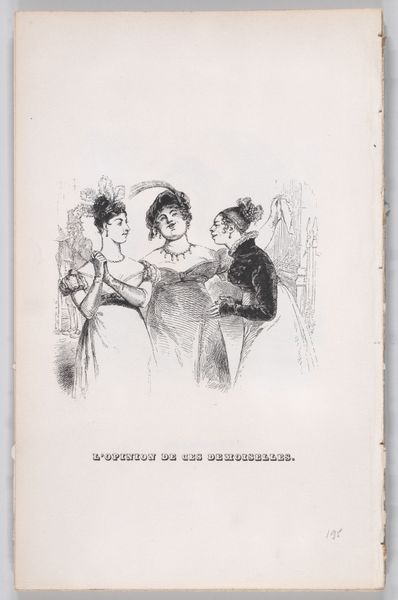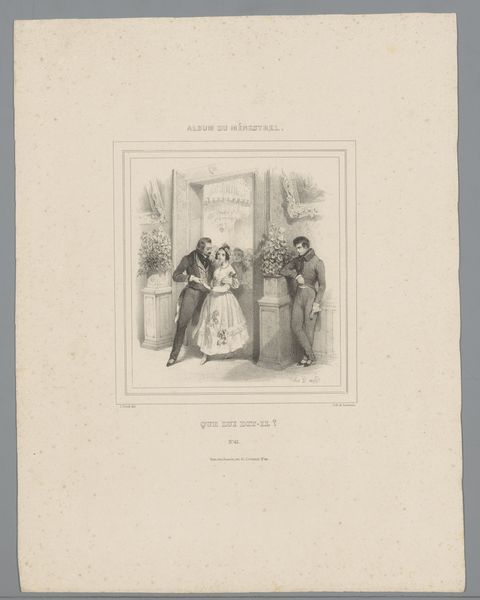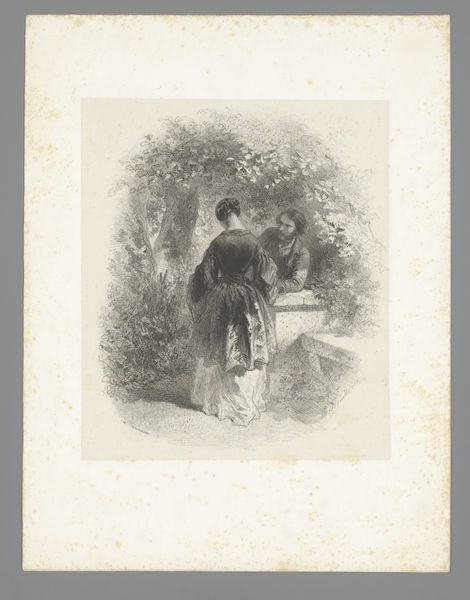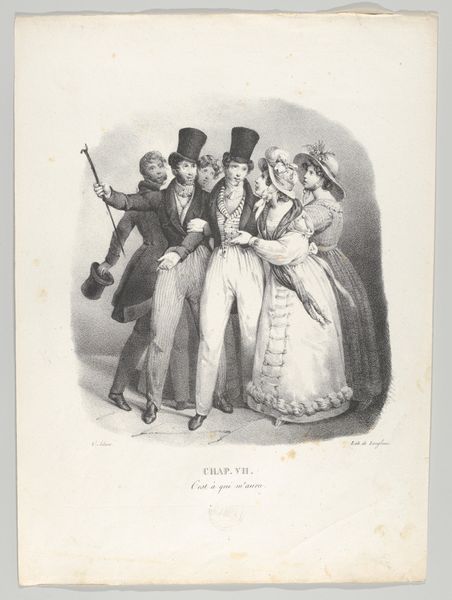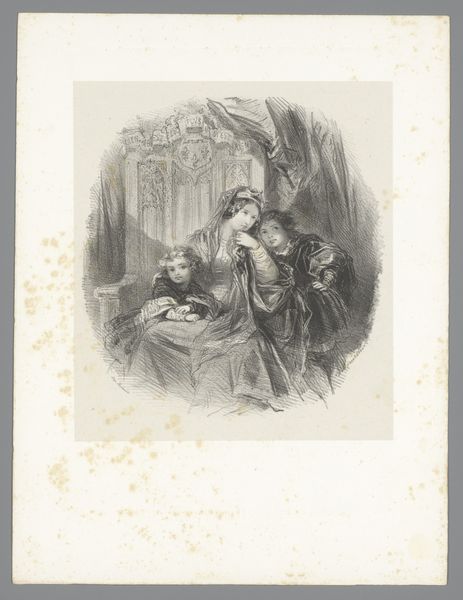
print, engraving
#
narrative-art
# print
#
old engraving style
#
figuration
#
romanticism
#
genre-painting
#
history-painting
#
engraving
Dimensions: height 362 mm, width 275 mm
Copyright: Rijks Museum: Open Domain
Curator: Here we have "Man en vrouw hand in hand naast twee mannen", translating to "Man and woman hand in hand next to two men", an engraving by Célestin Nanteuil, likely created between 1823 and 1873. Editor: It feels like a stage in a play, or perhaps an illustration lifted directly from the pages of a novel. There’s a softness, a theatrical drama suggested by the poses and garments. Curator: Absolutely. Nanteuil was a figure deeply entrenched in the Romantic movement. Look how the artist uses figuration to convey complex narratives within a small space, reflecting larger themes of social dynamics and gender roles of that period. It asks us: what are the constraints around gender, identity, class within the 19th century context? Editor: Let's talk about the material itself, this print, this engraving technique. What kind of social role did printed materials have, specifically engravings? How does that play into our understanding of Nanteuil's work, in the sense of accessibility? Curator: Prints democratized art viewing to an extent. More broadly, engraving served as a medium to circulate social and political ideas. Editor: I'm particularly interested in this circulation because it could lead to shifts in those power structures that, as you pointed out, underwrite gender roles and social roles during the Romantic period. Curator: Yes. Art's reach extends further than mere aesthetic contemplation. Now, what do we make of the composition? We have two individuals front and center and some folks slightly further back. What could that configuration tell us? Editor: There is a direct contrast that Nanteuil subtly highlights through the very action of creating the work—carving into a material surface. It creates an inherent connection between production and meaning. The hand holding speaks both about affection and about physical making. Curator: Thinking intersectionally, this print offers a snapshot into potential anxieties about intimacy and shifting societal expectations in the nineteenth century. This artwork’s accessibility and content fostered discourse around sensitive and intimate themes. Editor: Seeing art and thinking about it in this way gives one a much better, broader idea of not just the social context of artwork, but of art making.
Comments
No comments
Be the first to comment and join the conversation on the ultimate creative platform.
